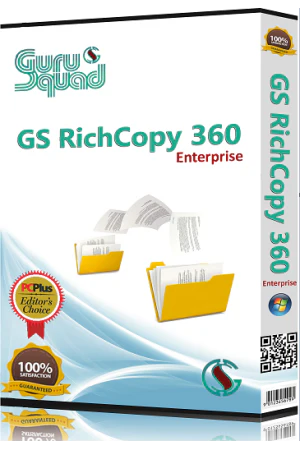
When it comes to file transfer, synchronization, and backup tasks, many IT professionals and power users rely on Robocopy, Microsoft’s long-standing command-line utility. While Robocopy is powerful and flexible, it is often criticized for being complex, error-prone, and lacking modern user-friendly features. This has created demand for better Robocopy alternatives that offer greater speed, reliability, and ease of use.
In this article, we explore the best Robocopy alternatives available today—highlighting tools that can handle everything from large-scale enterprise file transfers to simple home backups.
Why Look for a Robocopy Alternative?
Although Robocopy has served Windows users for decades, it comes with certain limitations:
Steep Learning Curve – Requires command-line knowledge.
Error Handling – Limited error reporting, making troubleshooting difficult.
Performance Issues – Slower when handling millions of small files.
Lack of Modern Features – No built-in GUI, scheduling, or cloud integrations.
For these reasons, many professionals turn to Robocopy alternatives that provide faster performance, GUI interfaces, advanced logging, scheduling, and cloud-based sync capabilities.
Top Robocopy Alternatives for Speed, Reliability & Ease
1. Gs RichCopy 360
Gs RichCopy 360 by GuruSquad is one of the most recognized Robocopy replacements in the IT world.
Key Features:
Multi-threaded file transfer for maximum speed.
Supports long path names (over 260 characters).
Advanced error handling and reporting.
Real-time replication for critical environments.
Full GUI interface for ease of use.
Supports cloud platforms like OneDrive, Google Drive, and Dropbox.
Why It’s Better Than Robocopy:
Unlike Robocopy, which is single-threaded, Gs RichCopy 360 uses multi-threading to transfer multiple files simultaneously. This leads to drastically faster performance, especially for servers with millions of files.
2. Teracopy
Teracopy is designed for users who want fast, secure, and efficient copy/move operations.
Key Features:
Error recovery during transfers.
Pause and resume file transfers.
CRC checksum verification for data integrity.
Clean and simple user interface.
Why It’s Better Than Robocopy:
Robocopy lacks any real verification process, but Teracopy ensures files are identical post-transfer. It also provides a more intuitive interface, making it ideal for non-technical users.
3. FastCopy
FastCopy is an open-source file copy utility known for its unmatched speed and efficiency.
Key Features:
Extremely lightweight and portable.
Works at the lowest level of Windows I/O for maximum speed.
Supports command-line automation.
Accurate verification with MD5/SHA-1 checks.
Why It’s Better Than Robocopy:
FastCopy is often considered the fastest file copying utility available on Windows. Unlike Robocopy, it gives precise control over copy methods and buffer sizes, allowing IT admins to fine-tune performance.
4. SyncBackPro
SyncBackPro is a full-featured backup and synchronization solution that goes far beyond simple copying.
Key Features:
Works with local drives, network drives, FTP, SFTP, and cloud storage.
Highly customizable scheduling options.
Advanced versioning and compression.
Powerful reporting and logging.
Why It’s Better Than Robocopy:
Robocopy cannot natively handle cloud backups, compression, or versioning. SyncBackPro delivers these features in a user-friendly package, making it suitable for both home and enterprise users.
5. Beyond Compare
Beyond Compare is not just a copying tool—it’s a file and folder comparison utility with powerful sync features.
Key Features:
Compare files and folders with side-by-side views.
Merge changes between directories.
Synchronize files to USB drives, FTP servers, and cloud platforms.
Supports scripting for automation.
Why It’s Better Than Robocopy:
Beyond Compare helps users visualize differences before syncing, something Robocopy cannot do. It’s especially useful for developers and system admins who need to ensure file integrity and consistency.
6. GoodSync
GoodSync is a robust file synchronization and backup tool that emphasizes reliability and automation.
Key Features:
Supports real-time and scheduled synchronization.
Works with cloud services, FTP, SFTP, and WebDAV.
End-to-end data encryption.
Cross-platform support (Windows, macOS, Linux).
Why It’s Better Than Robocopy:
Robocopy is Windows-only and lacks cross-platform functionality. GoodSync makes it easy to synchronize files across multiple devices and operating systems, which is essential in today’s multi-device environments.
7. FreeFileSync
FreeFileSync is an open-source file synchronization tool that competes directly with Robocopy.
Key Features:
User-friendly interface with drag-and-drop operations.
Real-time synchronization support.
Batch automation with scripting.
Works with network shares and external drives.
Why It’s Better Than Robocopy:
FreeFileSync offers a visual experience that eliminates the guesswork involved with Robocopy commands. It’s a top choice for users who want simplicity and reliability without losing advanced syncing power.
How to Choose the Right Robocopy Alternative
When selecting a replacement for Robocopy, consider:
Speed Requirements – Multi-threaded tools like Gs RichCopy 360 and FastCopy are best for large datasets.
Ease of Use – Tools like Teracopy and FreeFileSync are excellent for beginners.
Cloud Integration – Solutions like SyncBackPro and GoodSync offer direct cloud support.
Enterprise Needs – For large organizations, Gs RichCopy 360 provides enterprise-grade replication, scheduling, and logging.
Final Thoughts
While Robocopy remains a powerful command-line utility, it is no longer the fastest or easiest option for today’s data management needs. Whether you need blazing-fast multi-threaded performance, cross-platform support, or simple GUI-based file transfers, the alternatives listed above provide better solutions in speed, reliability, and usability.


Write a comment ...